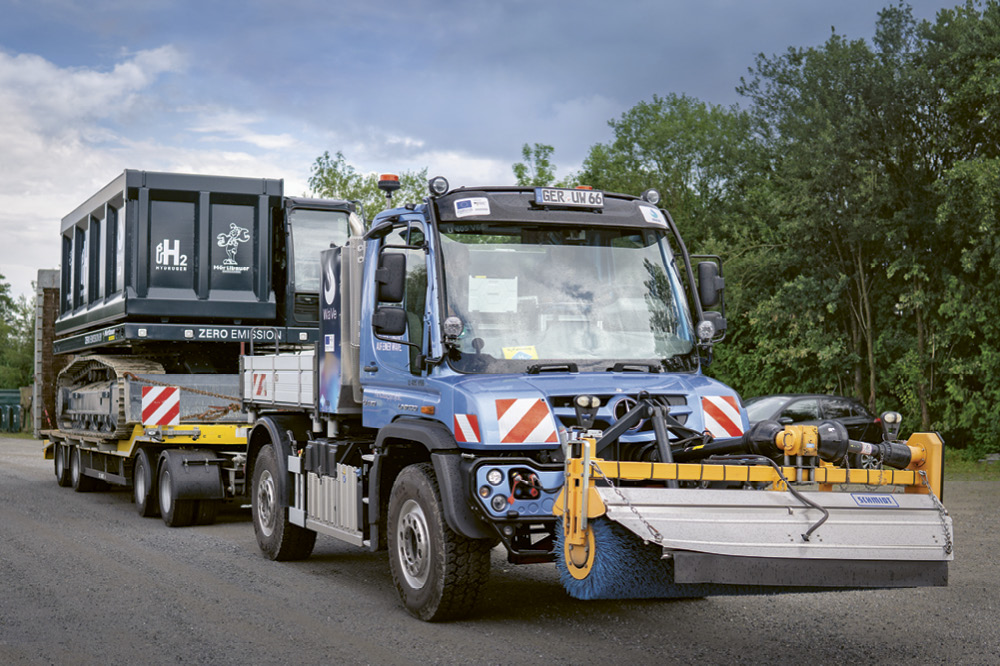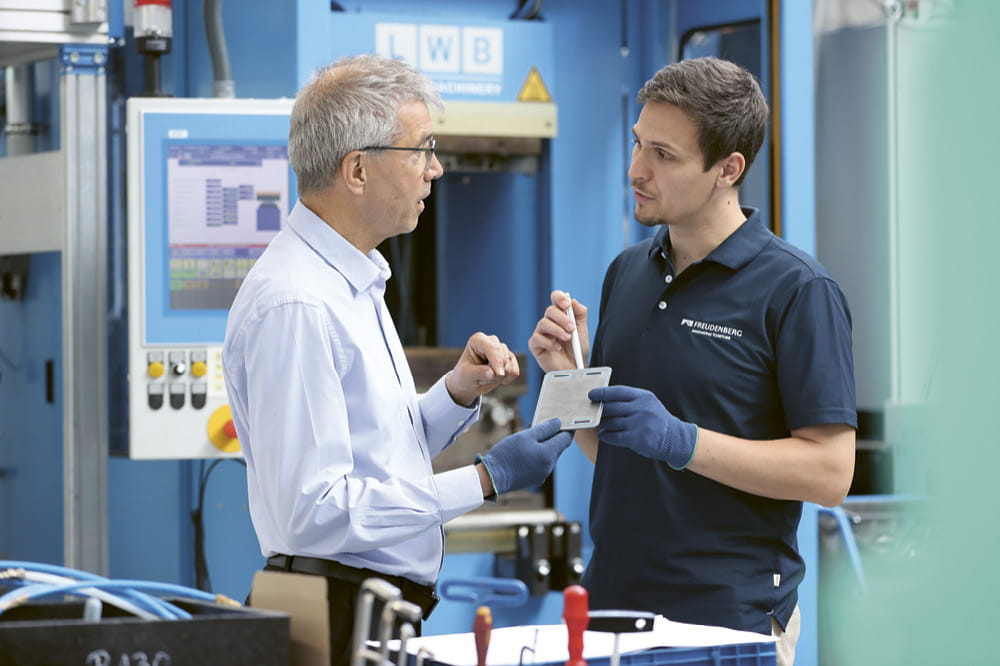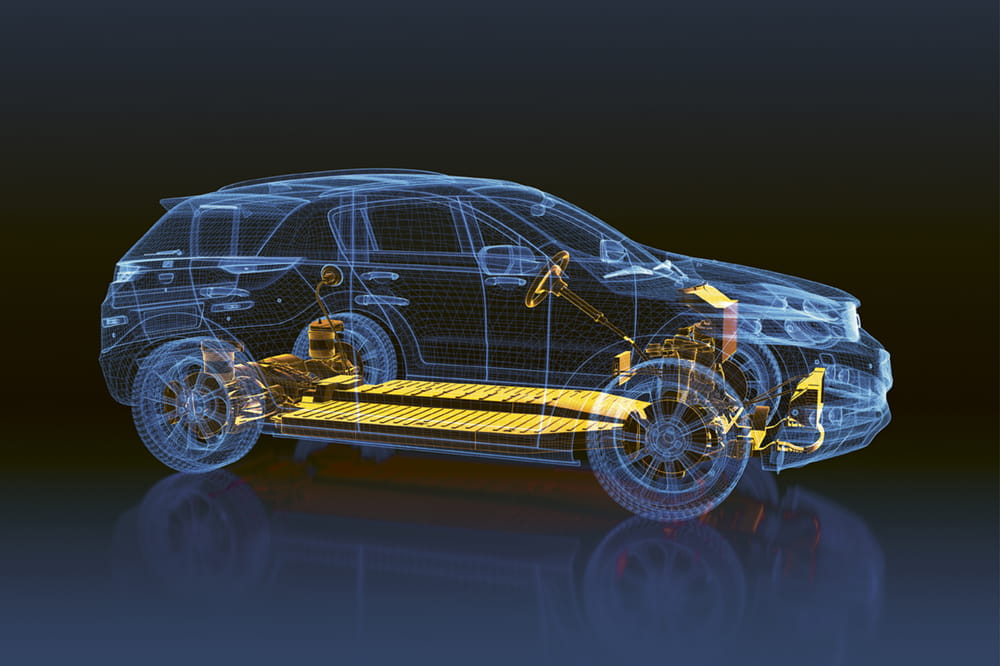Obtain news and background information about sealing technology, get in touch with innovative products – subscribe to the free e-mail newsletter.

Fast Forward
A growing number of large cities want to switch to public buses with battery-electric powertrains. The Hamburg-Holstein Transit Company is one of the pioneers in Germany. A visit to an electric bus depot in 2020 showed that the charging infrastructure must be taken into account right from the start.
Erwin regularly works late into the night. Yet his next shift often begins before sunrise, and he can only get a little rest at noon from time to time. This arduous shift work does not violate occupational safety laws since Erwin is a transit bus. The vehicle, measuring a full 12 meters (13 yards) in length, just joined the Hamburg-Holstein Transit Company in February. It was four years ago that VHH Managing Director Toralf Müller announced that the company would only buy emission-free buses beginning in 2020. That time has come, and the first 16 electric buses are standing in the Bergedorf depot, on the far east side of Hamburg. Their names, which were selected in an employee competition, all begin with the letter “E.”
We demand the same flexibility from our electric buses that we get from vehicles with diesel engines.
Toralf Müller, Managing Director Hamburg-Holstein Transit Company (VHH)
The electric buses have to prove themselves in normal transit use right from the start. The operations involve “round trips,” predetermined daily travel from the departure to the return to the depot. A bus can be used on various lines. A typical round trip for an urban public bus covers about 200 kilometers. The battery for an electric bus must be able to last that long unless it can be recharged en route. Müller won’t even consider the idea of special treatment, such as different trips and routes, for his electric buses. “We demand the same flexibility from our electric buses that we get from vehicles with diesel engines,” he said. Right from the beginning, he ruled out charging batteries en route, at the terminus of a line, for instance. That would have restricted the use of electric buses to particular lines or would have been very expensive.
Reducing Peak Loads
The charging can only take place at the bus depot. Even there, things have to move fairly smoothly because the battery modules on individual buses, which are built into the rear and the roof, hold a total of 243 kilowatt hours of energy. The charging capacity, which is limited by the maximum current strength, is 150 kilowatts. By comparison, the installed load for a standard townhouse is only 50 kilowatts. If you take the roughly 120 buses that will have to connect with the grid every night at the Bergedorf depot, you end up with a peak output of 18 megawatts, which is about the capacity for a small city district. Even if the VHH depot were adjacent to an electrical substation, it would be enormously expensive to provide the peak output on demand. That’s why Hendrik Wüst, who is responsible for the charging infrastructure, and his team are working on smart charging management. In the first phase of the expansion, the charging capacity as well as the start and end of the charging process can only be programmed in advance. Later Wüst and his staff will be able to determine load profiles and take external data – for example, the existing supply of green energy – into account.
“Not every bus leaves the depot at the same time and, depending on the schedule, the battery need not be completely charged in every case,” Wüst explained. “Our calculations show that we can reduce peak loads by about around 50 percent with a smart charging strategy.” A battery storage system with a capacity of about around 500 kilowatts is still in the testing phase. Electric current from the grid can be buffered there. This makes it possible to draw electricity when it’s more abundant than usual – and therefore less expensive. It is interesting that the lithium- ion batteries in the storage system had a prior life in MAN transit buses.
The charging process itself is as mundane as it is for an electric car. After he is done with his trip, the driver takes the CCS plug from the charging station, puts it in the charge socket and secures the plug connection. The charging takes place with direct current at about 750 volts. It is transformed and rectified in two container-sized facilities, each of which provide 64 charging points using a line set in the ground during the final expansion stage. The entire electric infrastructure takes up a bit of space, although that’s not a major issue in the Bergedorf industrial district. But the VHH has a dozen or more other depots in the greater Hamburg area, and conditions are significantly tighter in some of them. “Controlled charging can help to limit the need for space,” Wüst said. Another measure is proving useful: The VHH has turned to a Polish manufacturer for double charging stations, which can split the output: If only one bus is connected to the network, the full 150 kilowatts are available. If there are two, they share the output.
Climbing onto the Roof
Electric buses basically require less maintenance than their diesel counterparts. There is no motor oil or fuel filter that has to be changed. And since the electric motor largely handles the braking process, the brakes wear less. Nonetheless, the VHH has invested in a modern maintenance facility. Mike Ehmke, who is responsible for the technology of VHH’S VHH’s electric buses, explained why it is needed. “When it comes to electric buses, a large portion of the energy supply system is on the roof, so we wanted to create workplaces where the maintenance staff has safe access to it.” So a second work level has been constructed in the space. Its individual sections can be brought close to the bus’s roof so there is no gap at any of the four sides.
The VHH has used electric and hybrid buses in tests on individual lines for years, but they still have much to prove at this point. What is the true level of availability? What are the energy needs in practice? They were precisely computed for each line in advance with the help of Helmut Schmidt University. How quickly is battery technology advancing? The VHH wants to complete the conversion of its entire fleet by the end of the decade. “With today’s battery technology, we can cover about 50 percent of the round trips,” Müller said. And the rest? He pointed to the most important lesson of the conversion: “We have to tackle the changes actively and leave no stone unturned.”
More Stories About E-Mobility

Join Us!
Experience Freudenberg Sealing Technologies, its products and service offerings in text and videos, network with colleagues and stakeholders, and make valuable business contacts.
Connect on LinkedIn! open_in_new











